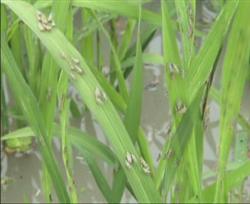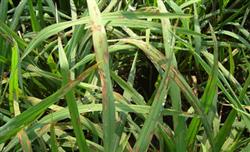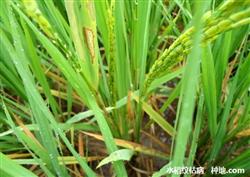Rice diseases and insect pests: what should be paid attention to in the control of rice diseases and insect pests in the later stage?

What should be paid attention to in the control of diseases and insect pests in the later stage of rice? Please guide the prevention and control of diseases and insect pests in the later stage of rice need to pay attention to the following points: the control object should be specific to the different types of diseases and insect pests in the field, take the corresponding pesticide control. When pesticides are mixed, the content of pesticides should be made clear, especially for the control of neck blast. There are two dosage forms of tricyclazole, which should not be mistaken. Do not increase the dosage of pesticides blindly, it will increase the cost of disease and pest control and easily cause drug damage to crops. In addition, pesticides must pay attention to existing use, to prevent chemical reactions between pesticides and reduce efficacy. There are many thunderstorms in summer and autumn, adding auxiliaries to pesticides can not only improve the effect of the liquid, but also delay the scouring of Rain Water, which can ensure the control effect. When spraying uniformly and uniformly using pouring pump to control diseases and insect pests, the medicine must be dispensed in buckets according to the length of the field, or the spray scale should be marked in the dispensing container, and the sprinkler should prevent sundries from clogging. The use of 1.6 fog machine operation, staffing should be sufficient, generally to 6: 7 north-south spray prevail, each bucket of water 1: 1.3 mu is appropriate. When you start spraying, you can close the nozzle to spray the precipitated liquid into the air or put it into a bucket in advance. When each bucket of water is sprayed to the head, the nozzle should be turned off immediately. It is not appropriate to spray repeatedly to prevent the seedlings from being burned by high concentration liquid. It is important to avoid the flowering stage of rice (before 9am and after 3pm) as far as possible, so as not to cause pollen abortion; the morning dew is too heavy and it is not suitable to apply, which will reduce the content of the liquid; if there are pesticides such as phoxim pesticides that can be easily decomposed, it is advisable to use the medicine on a cloudy day or after 3 p.m. If dichlorvos is used to control rice planthopper in the late growth stage, it should be applied at noon when the weather is fine to improve the control effect. When the spraying part should clearly control panicle neck blast and rice leaf roller, the sprinkler should be sprayed upward to let the fine liquid slowly fall or float to the panicle or leaf of the plant. 1.6 spraying machines are more effective in controlling rice planthopper or rice sheath blight; when controlling rice planthopper or rice sheath blight, the spray should be aimed at the middle and lower part of the plant, so that the liquid should be sprayed to the base of rice as much as possible to strengthen the control of diseases and pests and the protection of leaves. The pump with large amount of water is better for the prevention and control of this kind of diseases and pests. When there is knowledge in the field water layer to control rice planthopper and more than 2-instar rice leaf roller larvae, the water layer of 3-5 days should be properly established in the field, so that the liquid liquid can be covered all over the field to form a liquid layer climbing among plants, so as to increase the control effect; if it is to control sheath blight, rice blast, rice false smut or insect eggs and young rice nymphs, we should not pay attention to the water layer. In the later stage, when fumigation is carried out in the field to control rice planthopper, it is necessary to keep the field dry and dry in order to achieve a better control effect. It is forbidden to use methamidophos, 1605 and other pesticides and pyrethroids that are explicitly prohibited by the state. The fields traced back to the quality of rice should be applied strictly according to the specified formula, and it is forbidden to use insecticides with long residual time, such as chlorpromazine, pyramine, probophos and so on. It is not suitable to apply any medicament one month before harvest. Pay attention to the inspection of the control effect of diseases and insect pests, rental workers and farmland managers should, within a certain period of time after the prevention and control of diseases and insect pests, strengthen the inspection of the control effect of pesticides, find out the causes of the fields or areas with poor control effect in time, and make up treatment immediately, in order to eliminate the occurrence of diseases and insect pests in the bud. Click to get more rice planting techniques click to get more food crop planting techniques
- Prev

Rice cultivation: how to control diseases and insect pests in the middle and later stages of rice?
How to control diseases and insect pests in the middle and later stage of rice? Please introduce in detail the methods for the control of rice diseases and insect pests in the middle and later stages, including rice blast, bacterial leaf blight, stem borer and planthopper, which can be controlled with reference to the following methods: (1) the control of rice blast is at the jointing and tillering stage of rice, when the central diseased plant appears in the field (early July).
- Next

Rice diseases and insect pests: what are the diseases and insect pests in the later stage of rice? How to prevent and cure it?
What are the diseases and insect pests in the later stage of rice? How to prevent and cure it? Please introduce in detail the main diseases and insect pests in the later stage of rice: 1. Sheath blight: the recent increase in sheath blight has accelerated, with an average disease rate of 13.7% and a diseased plant rate of 3.3%, which is significantly faster than that of the previous period, especially in Wuyunjing series varieties. sheath blight is generally serious.
Related
- The first cup of black tea in spring, the flavor and history of tea gardens in Kenya, Africa
- The computer can not only choose potatoes, but also grow tea rice. AI will grow winter oolong tea champion.
- It is not only the inflated tea bitten by insects, but also engraved with the four seasons tea in Beipu.
- The Oriental Beauty Tea Festival in Zhuxian County takes the stage at the weekend to experience the plus-size feast of oil tea.
- & quot; Oriental Beauty Tea & Exploration of Emei in Hsinchu, the hometown of quot;
- The new variety of strawberry "Tainong 1" dessert is the first choice with mellow aroma. Crimson gorgeous
- History of Tea in Taiwan: from Wild Inner Mountain to Export Tea Garden
- Two types of Taiwan Oriental Beauty Black Tea won the British three-Star Award for Childhood Tea Xiang Zhang Jiaqi changed from pilot to champion tea maker.
- Banana species and varieties: the planting history of Taiwan Xianren banana and dwarf banana is long, is banana disease resistant?
- Coffee planting Technology: Qianjie Coffee from Seedling to harvesting

